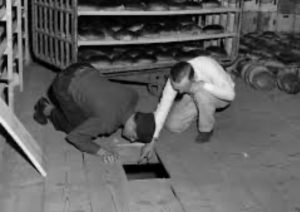History
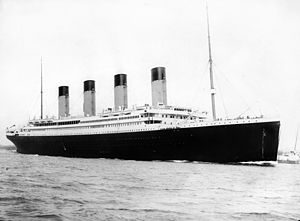 On September 1, 1985 a ship that had been missing in the North Atlantic since 1912…the RMS Titanic…was finally located, but the way in which it was found was not what it seemed to be. Everyone knows the story of Titanic, either from personal loss, history, or from recent movies on the subject, that romanticized it and endeared the ship to the world. The Titanic sank on April 15, 1912, after sailing headlong into an iceberg, while traveling at an unsafe speed, against protocol. The disaster took 1500 people to a watery grave, and changed the protocols concerning the radio room, speeds in iceberg prone areas, and radar to warn the ships about obstacles in the area.
On September 1, 1985 a ship that had been missing in the North Atlantic since 1912…the RMS Titanic…was finally located, but the way in which it was found was not what it seemed to be. Everyone knows the story of Titanic, either from personal loss, history, or from recent movies on the subject, that romanticized it and endeared the ship to the world. The Titanic sank on April 15, 1912, after sailing headlong into an iceberg, while traveling at an unsafe speed, against protocol. The disaster took 1500 people to a watery grave, and changed the protocols concerning the radio room, speeds in iceberg prone areas, and radar to warn the ships about obstacles in the area.
Oceanographer, Robert Ballard successfully found the Titanic while on a scientific mission for, of all people, the US Navy. The Navy had no interest in the Titanic, but Ballard had long wanted to find it, and he decided that the current mission would be the perfect chance to hunt for the Titanic, as well as the two submarines, USS Thresher and USS Scorpion, both of which had gone down in the North Atlantic and both of which were carrying powerful nuclear reactors. The Navy wanted to know if the Soviets had  shot down the submarined and if their nuclear material still remained 15,000 feet beneath the surface.
shot down the submarined and if their nuclear material still remained 15,000 feet beneath the surface.
Ballard asked the Navy to fund a project called Argo in the early 1980s. Argo was a submarine that could photograph the underwater to a depth of 20,000 feet. He wanted to find Titanic, but the Navy wanted to us the Argo to find the Thresher and the Scorpion. They agreed provided that he search for all three. In 1985 Ballard set out on a covert Cold War Mission, but publicly he was looking for Titanic. Ballard found the USS Scorpion, and then had just 12 days left to find Titanic. It was not going to be easy. Twelve days to find a ship that the French Research Institute couldn’t locate in five weeks.
While it seemed unlikely that the team would find the Titanic in the short amount of time they had left, their worry about the project’s success would prove unfounded. Around 2am on September 1, 1985, after over a week of taking pictures and finding nothing, the on-duty watch team called for Ballard. The Argo had spotted 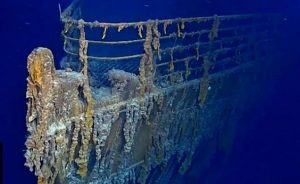 something unusual on the seafloor. As the team peered at a grainy image before realizing that they were looking at the boiler from the Titanic. The team was ecstatic, as the popped champagne for a toast. Then they realized that it was almost the exact time that Titanic went down 73 years earlier. The team felt almost as if they were violating the sanctity of a grave, even if it was well below them. Ballard later wrote, “It was one thing to have won – to have found the ship. It was another thing to be there. That was the spooky part. I could see the Titanic as she slipped nose first into the glassy water. Around me were the ghostly shapes of the lifeboats and the piercing shouts and screams of people freezing to death in the water.”
something unusual on the seafloor. As the team peered at a grainy image before realizing that they were looking at the boiler from the Titanic. The team was ecstatic, as the popped champagne for a toast. Then they realized that it was almost the exact time that Titanic went down 73 years earlier. The team felt almost as if they were violating the sanctity of a grave, even if it was well below them. Ballard later wrote, “It was one thing to have won – to have found the ship. It was another thing to be there. That was the spooky part. I could see the Titanic as she slipped nose first into the glassy water. Around me were the ghostly shapes of the lifeboats and the piercing shouts and screams of people freezing to death in the water.”
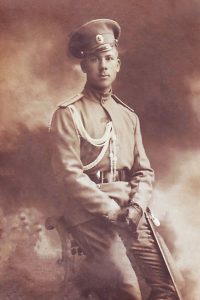
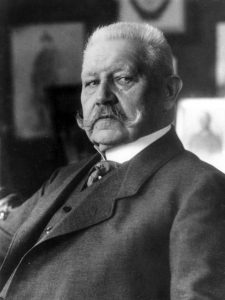 In what might today be considered almost post-apocalyptic, the Battle of the Osowiec Fortress, was nevertheless fought during World War I. The year was 1915, and World War I was in full swing. It was also an era of innovation in weaponry, and many were the never-before-seen weapons of warfare, as well as new and never-before-heard-of tactics.
In what might today be considered almost post-apocalyptic, the Battle of the Osowiec Fortress, was nevertheless fought during World War I. The year was 1915, and World War I was in full swing. It was also an era of innovation in weaponry, and many were the never-before-seen weapons of warfare, as well as new and never-before-heard-of tactics.
The Germans had launched a full frontal attack on the Russian Osowiec Fortress, located in present-day Poland, at the beginning of July. Included in the attack were 14 battalions of infantry, one battalion of sappers, 24–30 heavy siege guns, and 30 batteries of artillery equipped with poison gasses led by Field Marshal Paul von Hindenburg. Russian defenses were manned by 500 soldiers of the 226th Infantry Regiment Zemlyansky, and 400 militia. The Russians were quite outnumbered.
On August 6, 1915, the German forces employed chemical weapons on the Russians. At 4am, after waiting for favorable wind conditions, the German attack began with regular artillery bombardment combined with chlorine gas. As the scene was described, “The gas caused the grass to turn black and leaves to turn yellow, and the dead birds, frogs, and other animals and insects were lying everywhere. Terrain looked like Hell.” The Russians soldiers either had no gas masks, or had only poorly made ones, and most soldiers used their undershirts as masks, with many soaking them in water or urine to help with their effectiveness at holding the gas at bay. I think most of us have heard of the horrors caused by the use of chemical warfare, and most people are vehemently opposed to such atrocity, because of the effects, which if not instantly deadly, can cause the victim to slowly die over a number of years, fraught with lingering health problems. Most of the Russian soldiers died immediately, but some survived the gas attack. Sub-Lieutenant Vladimir Kotlinsky, the highest ranking Russian soldier to survive the initial attack, rallied the other surviving soldiers. They decided to charge the advancing German lines…what choice did they really have.
Over twelve battalions of the 11th Landwehr Division, making up more than 7000 men, advanced after the bombardment expecting little resistance. They were met at the first defense line by a counter-charge made up of the surviving soldiers of the 13th Company of the 226th Infantry Regiment. The invading German forces were horrified when they saw what appeared to be zombie-like soldiers. The panic began when they first caught sight of the Russians, who were coughing up blood and bits of their own lungs, as the hydrochloric acid formed by the mix of the chlorine gas and the moisture in their lungs had begun to dissolve their flesh. The Russian men were covered in blisters and coughing up their own respiratory organs, the Germans were subsequently retreating. The Russian garrison suffered heavy losses, but some soldiers survived even after the final charge, and Chlorine gas barrage. The Germans had retreated so fast that they got caught up in their own c-wire traps. The five remaining Russian guns subsequently opened fire on the fleeing Germans. Kotlinsky died later that evening. The Russian soldiers had basically fought their last battle as they were dying…hence the name given to the battle…The Attack of the Dead Men.
The dying Russians could not hold the area for much longer, of course. The soldiers there were sick, dying, or already dead. The Germans threatened to encircle the fortress with the capture of Kaunas and Novogeorgiesk. Knowing their fort was lost, the Russians demolished much of the fortress and withdrew on August 18th. While 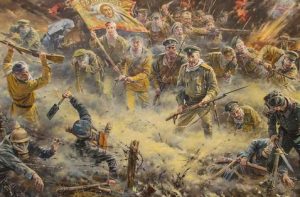
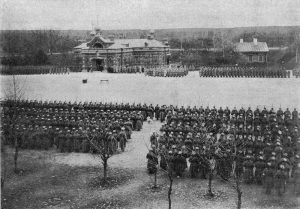 the German casualties were moderate to heavy, they were not nearly as bad as the Russian casualties of about 800 of the 900 men that were deployed at the fort. This story, although virtually unknown to the outside world, is a symbol of Russian military power and courage under fire. The story of this battle is commonly told and taught in Russian history classes.
the German casualties were moderate to heavy, they were not nearly as bad as the Russian casualties of about 800 of the 900 men that were deployed at the fort. This story, although virtually unknown to the outside world, is a symbol of Russian military power and courage under fire. The story of this battle is commonly told and taught in Russian history classes.
 In the Soviet Union’s Catherine Palace, located near Saint Petersburg, is rumored to have been a beautiful chamber decorated in amber panels backed with gold leaf and mirrors. The elaborately designed hall was a gift to Peter the Great from Germany. Constructed in the 18th century in Prussia, the room was dismantled and eventually disappeared during World War II. In the days before World War II started, Hitler had worked an “alliance agreement” with Stalin. Hitler really had no intention of keeping the agreement, but rather wanted to take control of Poland without Soviet interference. That didn’t make the Soviet Union safe either. When Germany made their move, the Soviets did not have enough time to prepare.
In the Soviet Union’s Catherine Palace, located near Saint Petersburg, is rumored to have been a beautiful chamber decorated in amber panels backed with gold leaf and mirrors. The elaborately designed hall was a gift to Peter the Great from Germany. Constructed in the 18th century in Prussia, the room was dismantled and eventually disappeared during World War II. In the days before World War II started, Hitler had worked an “alliance agreement” with Stalin. Hitler really had no intention of keeping the agreement, but rather wanted to take control of Poland without Soviet interference. That didn’t make the Soviet Union safe either. When Germany made their move, the Soviets did not have enough time to prepare.
It was 1941, when the Germans advanced. The job of removing the panels to safety would take time…time they didn’t have. The panels were quickly taken by the Germans and transported to Konigsberg, East Prussia. They were confiscating anything of value. Initially, the Amber Room was placed on public display at the Konigsberg Castle, but was hidden in anticipation of the 1945 Soviet advance. Before its loss, it was considered an “Eighth Wonder of the World.”
In 1701, the Amber Room was intended for the Charlottenburg Palace, in Berlin, Prussia, but was eventually installed at the Berlin City Palace. Designed by German baroque sculptor Andreas Schlüter and Danish amber craftsman Gottfried Wolfram, who worked on the room until 1707, at which time the work was continued by amber masters Gottfried Turau and Ernst Schacht from Danzig (Gdansk). The masterpiece remained in Berlin until 1716, when it was given by the Prussian King Frederick William I to his ally Tsar Peter the Great of the Russian Empire. In Russia, the beautiful room was installed in the Catherine Palace. In the castle, the room was further expanded and several renovations where performed, making it an even more stunning chamber than it had been before. In the end, it covered more than 590 square feet and contained over 13,000 pounds of amber.
When the Army Group North of Nazi Germany took possession of the Amber Room during World War II, it was taken to Königsberg for reconstruction and display. Like many stolen treasures, the Germans hid the Amber Rooms panels, and its eventual fate and current whereabouts, if it has survived, remain a mystery. While most  experts believed it was obliterated during the intense shelling that destroyed the Konigsberg Castle, I don’t believe that is true, because surely some evidence of that much amber would have been found after a bombing, but none was ever found at the site.
experts believed it was obliterated during the intense shelling that destroyed the Konigsberg Castle, I don’t believe that is true, because surely some evidence of that much amber would have been found after a bombing, but none was ever found at the site.
Persistent rumors about the current location of the Amber Room have never panned out, and after years of searching, it was decided in 1979, to create a reconstructed Amber Room at the Catherine Palace. After decades of work by Russian craftsmen and donations from Germany, the reconstructed Amber Room was finally inaugurated in 2003.
 Most of us have received a speeding ticket in our years of driving, and if not, I’m sure that every one of us has exceeded the speed limit at one time or another, even if it was accidental, and only for a few seconds. It seems that most of the accidents of that era were blamed on excessive speed. In the 1900s, the Mercedes-Simplex 60HP could reach a maximum speed of 73 miles per hour. By 1920, the Duesenberg Model J could reach speeds of 119 miles per hour. Of course, we have vehicles today that can reach much higher speeds…such as the Koenigsegg Agera RS that has a maximum speed of 278. We have come a long way from the days of the Horse Carriage that had a maximum speed of 30 miles per hour, but in 1900, we had no speed limit. The maximum speed of the car was the acceptable speed limit, whether the driver could control the vehicle at that speed or not. How many people do you know who have good control of a vehicle at 119 miles per hour? Most people couldn’t honestly claim to be in control at that speed.
Most of us have received a speeding ticket in our years of driving, and if not, I’m sure that every one of us has exceeded the speed limit at one time or another, even if it was accidental, and only for a few seconds. It seems that most of the accidents of that era were blamed on excessive speed. In the 1900s, the Mercedes-Simplex 60HP could reach a maximum speed of 73 miles per hour. By 1920, the Duesenberg Model J could reach speeds of 119 miles per hour. Of course, we have vehicles today that can reach much higher speeds…such as the Koenigsegg Agera RS that has a maximum speed of 278. We have come a long way from the days of the Horse Carriage that had a maximum speed of 30 miles per hour, but in 1900, we had no speed limit. The maximum speed of the car was the acceptable speed limit, whether the driver could control the vehicle at that speed or not. How many people do you know who have good control of a vehicle at 119 miles per hour? Most people couldn’t honestly claim to be in control at that speed.

Speed restrictions, and laws against speeding weren’t new on August 28, 1923. The first law regarding automobile speeds actually too effect on May 21, 1901 in Connecticut. The law required that vehicles limit their speed in cities to 12 miles per hour, and 15 miles per hour on country roads. In 1899, a cab driver named Jacob German had been arrested for driving his electric taxi at a speed of 12 miles per hour. It was thought that a more prudent speed would have been 8 miles per hour. Representative Robert Woodruff wanted to make a law, and he suggested 8 miles per hour on city streets and 12 on country roads. In the end the speeds were changed to 12 miles per hour on city streets and 15 miles per hour on country roads. While those speeds seem like crawling to the drivers of today, I suppose they seemed fast then.
 Still, drivers were as unwilling to abide by the speed regulations of that day, as they are today. Then, it was decided to make a law that would be a true deterrent to speeders. It was a strict law…too strict, in fact, but they had to try. The law allowed the magistrates…police, to put the car in a storage lot for periods of time depending on the severity of the speeding offence and if the motorist is a repeat offender. Also, due to the increases in incidents, some offenders were sentenced to farm labor. Now, if that wouldn’t deter you from speeding I just don’t know what will. Still, such severity of punishment really would never be accepted for long, as we all know. And of course, that is not a law today…but it was once.
Still, drivers were as unwilling to abide by the speed regulations of that day, as they are today. Then, it was decided to make a law that would be a true deterrent to speeders. It was a strict law…too strict, in fact, but they had to try. The law allowed the magistrates…police, to put the car in a storage lot for periods of time depending on the severity of the speeding offence and if the motorist is a repeat offender. Also, due to the increases in incidents, some offenders were sentenced to farm labor. Now, if that wouldn’t deter you from speeding I just don’t know what will. Still, such severity of punishment really would never be accepted for long, as we all know. And of course, that is not a law today…but it was once.
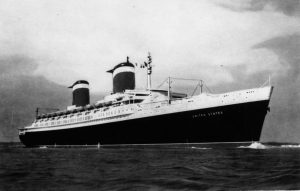 Over the centuries, ships have been named for famous leaders, for some ideal, or even for cities and states. They have been remembered for their wartime prowess, their luxurious furnishings, or for the tragic sinking. It seems like most vehicles, like ships, planes, and trains are often best remembered if they are involved in a tragic loss. Our minds tend to vividly remember traumatic events.
Over the centuries, ships have been named for famous leaders, for some ideal, or even for cities and states. They have been remembered for their wartime prowess, their luxurious furnishings, or for the tragic sinking. It seems like most vehicles, like ships, planes, and trains are often best remembered if they are involved in a tragic loss. Our minds tend to vividly remember traumatic events.
Still, some vehicles have been remembered for other reasons. The Spruce Goose for example, was a plane of enormous size that was made out of wood. The Hughes Flying Boat was at one time the largest aircraft ever built. Designer Howard Hughes piloted it on its first and only flight. It flew around the world in 3 days, 19 hours and 14 minutes. The plane still exists today and is housed in the Evergreen Aviation Museum in McMinnville, Oregon.
RMS Queen Elizabeth II was built in 1969. From the late 1960s until 2004, the Queen Elizabeth II was the only way to cross in luxury. She sailed many areas of the globe…not just the Atlantic. She even came to port in Sidney, Australia, among other places. The QE2 did not sink either, but rather, retired in 2008, and will soon become a floating hotel in Dubai.
All of these are interesting, but there is a ship that, to me, is far more unique than these…SS United States. I’m sure you are wondering what makes this ship so special. It’s not luxury. It didn’t sink. The thing that made this ship so special is that her top speed is a state secret. How fast must a ship be able to sail, before it is considered amazing enough that it must not be told? The average person couldn’t possibly know. I suppose someone knows, but it’s a secret. The SS United States is the last of the old greyhounds, and it is still around  today, slowly rusting at a Philadelphia pier…sadly. She was built with both passenger service and military use in mind. Many liners scrapped in the mid-1930s were sorely missed a few years later when WWII began…hence the secrecy about her true speed.
today, slowly rusting at a Philadelphia pier…sadly. She was built with both passenger service and military use in mind. Many liners scrapped in the mid-1930s were sorely missed a few years later when WWII began…hence the secrecy about her true speed.
In comparison with airplanes, I suppose that the speed of a ship would not seem so important. Many people in the 1960s stopped using ships, until the cruise craze came along. The SS United States still holds the westbound Blue Ribbon and has now been purchased by the Norwegian Cruise Line. Time will tell how the ship, purchased in 2004 will be used. As of 2018, she hasn’t sailed, but I hope that someday she will.
 When Hitler took power in Germany, the first goal was to take away the guns from the people. He then dismantled the police, and set up his own police force…loyal only to him. This was the beginning of Hitler’s planned takeover…first of Germany, and then the world. That was his goal, but thankfully, the world fought back, and evil did not prevail.
When Hitler took power in Germany, the first goal was to take away the guns from the people. He then dismantled the police, and set up his own police force…loyal only to him. This was the beginning of Hitler’s planned takeover…first of Germany, and then the world. That was his goal, but thankfully, the world fought back, and evil did not prevail.
World War II had gone on for almost five years…long years. Hitler’s forces were reeling from the devastating effects of D-Day, and Paris was next in line for liberation, The Allied machine was marching in to Paris to remove the Nazi Regime. Hitler was furious, and decided that if his army was to be forced out, they would take the best of the memories and landmarks of Paris with them. He planned to leave the city in smoldering ruins. Hitler issued the first of several orders to the German commander of Paris, General Dietrich von Choltitz, to destroy the city. What Hitler had not anticipated, was that von Choltitz would not blindly do his bidding. The last last commander of Nazi-occupied Paris in 1944, von Choltitz disobeyed Adolf Hitler’s orders to destroy the city, and instead surrendered it to Free French forces when they entered the city on August 25th. Choltitz later asserted that his defiance of Hitler’s direct order stemmed from its obvious military futility, his affection for the French capital’s history and culture, and his belief that Hitler had by then become insane, while other sources point to the fact that he had little control of the city thanks to the operations of the resistance, and could not have carried out such orders. Nevertheless, von Choltitz has since been referred to as “The Saviour of Paris.”
As I look at the current circumstances in the United States, I am reminded of the days of Hitler’s reign of terror. The riots in the streets, the calls for gun control and defunding the police, and the removal of the statues marking our past…good and bad, are all reminiscent of the days of early World War II. Just as in the days of 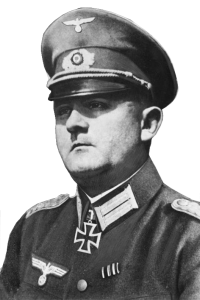 Hitler’s National Socialist Party, Socialism would not be good for America either. While the Democratic Party voters should understand that their values are like Hitler’s and yet, often blame the Republican party for being like Hitler, they are wrong. If they would look at history, instead of trying to remove our memory of the past, they would see just how alike Socialism is to Nazism and Hitler’s ways. Truly, the people of the United States need to wake up…and quickly. The decision to try to change our country to Socialism, is a slippery slope to communism, and the removal of the freedoms we hold so dear. We need to approach our future with our eyes wide open about the past of other nations, as well as the greatness that the American system of Capitalism has provided our nation with in the past. We like our freedom to let our voice be heard…a right that is found only in Capitalism. Don’t let the rights and privileges we so enjoy, be stolen from us by a handful of radical Socialists and Communists. The time to stand against Socialism and Communism is now!! Wake up America!!
Hitler’s National Socialist Party, Socialism would not be good for America either. While the Democratic Party voters should understand that their values are like Hitler’s and yet, often blame the Republican party for being like Hitler, they are wrong. If they would look at history, instead of trying to remove our memory of the past, they would see just how alike Socialism is to Nazism and Hitler’s ways. Truly, the people of the United States need to wake up…and quickly. The decision to try to change our country to Socialism, is a slippery slope to communism, and the removal of the freedoms we hold so dear. We need to approach our future with our eyes wide open about the past of other nations, as well as the greatness that the American system of Capitalism has provided our nation with in the past. We like our freedom to let our voice be heard…a right that is found only in Capitalism. Don’t let the rights and privileges we so enjoy, be stolen from us by a handful of radical Socialists and Communists. The time to stand against Socialism and Communism is now!! Wake up America!!

 I recently listened to a book entitled, Treasures From The Attic, by Mirjam Pressler (in conjunction with Gerti Elias, wife of Buddy Elias, cousin of Anne Frank). I was not sure upon beginning the book, if it would hold any value concerning my interest in World War II and the Holocaust, but my concerns were quickly laid to rest as I listened to the story unfold. I’m not going to go into the story line really, except to say that the “treasures” that lay in the attic were partly about Anne Frank, but really more about the Frank family, and their torturous journey to learn the truth, and then to recover from it.
I recently listened to a book entitled, Treasures From The Attic, by Mirjam Pressler (in conjunction with Gerti Elias, wife of Buddy Elias, cousin of Anne Frank). I was not sure upon beginning the book, if it would hold any value concerning my interest in World War II and the Holocaust, but my concerns were quickly laid to rest as I listened to the story unfold. I’m not going to go into the story line really, except to say that the “treasures” that lay in the attic were partly about Anne Frank, but really more about the Frank family, and their torturous journey to learn the truth, and then to recover from it.
The many letters written to the various members of the family to other members of the family, told the tale of not just loss, but the tragic and horrific time of not knowing. It was the “not knowing” that most tore at my heart. First the fact that most of Otto Frank’s extended family had no idea that his little family; comprised of his wife, Edith and daughters Margot and Anne; had fallen into the hands of the evil Nazi Regime. As was the practice during the Holocaust, the family was separated, and Otto did not know of the fate of his wife and daughters at the time of his release from Auschwitz-Birkenau. Of course, we now know that Edith had passed away on January 6, 1945, of starvation. His daughter, Margot died sometime in February or March 1945 of Typhus, and his daughter, Anne also died in February or March 1945 of Typhus. The bodies of the girls were thrown behind a building and later into a mass grave as their burial. The Jews were considered no more important that trash, and so were treated as such. While this is horrific enough, worse was the fact that all too often no record was kept of the dead, or their place of burial.
It was here that I began to feel the horrible longing, dread, and finally grief that the Frank family was going through. As anyone who has lost a loved on and doesn’t know what happened can tell you, the not knowing is almost worse than the reality of what happened. Your mind can conjure up so many things, and for Otto, who had also been in the camp can readily attest, the reality of Auschwitz-Birkenau was beyond all human comprehension, unless you had been there, and then you could not get it out of your head. Still, the months of 
 waiting for news of his family, followed by years of grief and heartache over what they had suffered, was beyond anything that most people can fathom. As I finished the book, I felt a tremendous sense of loss, not only for the Frank family, but for the many Jewish families, who suffered in the camps, and after the Holocaust as they endeavored to locate lost loved ones, or at least to learn their fate. Many searched for years, and some have never found out the fate of their loved ones at all. It was truly heartbreaking, and yet, that search and not knowing, was the reality that was faced by many Holocaust survivors.
waiting for news of his family, followed by years of grief and heartache over what they had suffered, was beyond anything that most people can fathom. As I finished the book, I felt a tremendous sense of loss, not only for the Frank family, but for the many Jewish families, who suffered in the camps, and after the Holocaust as they endeavored to locate lost loved ones, or at least to learn their fate. Many searched for years, and some have never found out the fate of their loved ones at all. It was truly heartbreaking, and yet, that search and not knowing, was the reality that was faced by many Holocaust survivors.
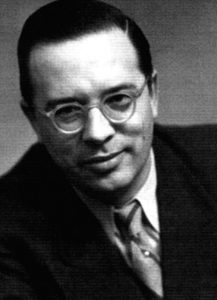 During the Holocaust, the majority of known Jews in any given country, had a very slim chance of surviving the war, but the Denmark Jews somehow managed to hold an impressive 95% survival rate record. Much of that was due to one man, Georg Ferdinand Duckwitz, who became an unlikely hero of the Jewish people…mainly because he was a German diplomat serving as an attaché for Nazi Germany in occupied Denmark at the time. In fact, that is what makes what he did so strange.
During the Holocaust, the majority of known Jews in any given country, had a very slim chance of surviving the war, but the Denmark Jews somehow managed to hold an impressive 95% survival rate record. Much of that was due to one man, Georg Ferdinand Duckwitz, who became an unlikely hero of the Jewish people…mainly because he was a German diplomat serving as an attaché for Nazi Germany in occupied Denmark at the time. In fact, that is what makes what he did so strange.
Duckwitz was born on September 29, 1904, in Bremen, Germany. He was part of an old patrician family in the Hanseatic City. After college, he began a career in the international coffee trade. From 1928 until 1932 Duckwitz lived in Copenhagen, Denmark. Upon moving back to Bremen, November 1932 he met Gregor Strasser, who was the leader of the leftist branch of the German nationalistic Nazi Party. While talking to Strasser, Duckwitz found that “elements of Scandinavian socialism [were] connected with nationalistic feelings” and this led to his decision to join the Nazi Party, and subsequently on July 1, 1933, to join the Nazi Party’s Office of Foreign Affairs in Berlin.
What had at first seemed to him to be a party who’s values agreed with his, he soon became increasingly disillusioned by Nazi politics. In a letter written June 4, 1935 to Alfred Rosenberg, the head of the office, he wrote, “My two-year employment in the Reichsleitung [i.e. executive branch] of the [Nazi Party] has made me realize that I am so fundamentally deceived in the nature and purpose of the National Socialist movement that I am no longer able to work within this movement as an honest person.” That move in itself strikes me now, as scary, considering how the known Nazi party functioned. He may not have realized hoe dangerous his words were, but I think they could have gotten him killed. Around the same time the Gestapo (secret police) made its first notes on Duckwitz after he sheltered three Jewish women in his Kurfürstendamm apartment during a local anti-Semitic Sturmabteilung event. He later wrote that during this time period he became “a fierce opponent of this [Nazi] system”.
After 1942, Duckwitz worked with the Nazi Reich representative Werner Best, who organized the Gestapo. On September 11, 1943 Best told Duckwitz about the intended round-up of all Danish Jews on October 1, 1943. A horrified Duckwitz travelled to Berlin in an attempt to stop the deportation through official channels. When that failed, he flew to Stockholm two weeks later, saying he was going to discuss the passage of German merchant ships. While there, he contacted Prime Minister Per Albin Hansson and asked whether Sweden would be willing to receive Danish Jewish refugees. A couple of days later, Hansson came back with the promise of a favorable reception. On September, 29, 1943, Duckwitz contacted Danish social democrat Hans Hedtoft and notified him of the intended deportation. Hedtoft warned the head of the Jewish community CB Henriques and the acting chief rabbi Marcus Melchior, who spread the warning. Sympathetic Danes in all walks of life organized an immediate mass escape of over 7,200 Jews and 700 of their non-Jewish relatives by sea to Sweden. Duckwitz’ immediate action and the willingness of the Danish and Swedish citizens saved the lives of 95% of Denmark’s Jewish population. They were the only European nation to save almost all their Jewish population from certain death at the hand’s of Hitler’s evil regime.
Somehow, Duckwitz was never caught committing his act of “treason” against the Third Reich, and he stayed in good standing with the Nazi regime. After the war, Duckwitz remained in the German foreign service. From 1955–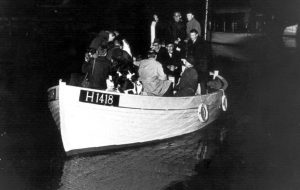 1958 Duckwitz served as West German ambassador to Denmark and later as the ambassador to India. When Willy Brandt became Foreign Minister in 1966, he made Duckwitz Secretary of State in West Germany´s Foreign Office. After Brandt became Chancellor, he asked Duckwitz to negotiate an agreement with the Polish government. Brandt’s work culminated in the 1970 Treaty of Warsaw. Duckwitz worked as Secretary of State until his final retirement in 1970. On March 21, 1971 the Israeli government named him Righteous Among the Nations and included him in the Yad Vashem memorial. He died two years later, on February 16, 1973 at the age of 68.
1958 Duckwitz served as West German ambassador to Denmark and later as the ambassador to India. When Willy Brandt became Foreign Minister in 1966, he made Duckwitz Secretary of State in West Germany´s Foreign Office. After Brandt became Chancellor, he asked Duckwitz to negotiate an agreement with the Polish government. Brandt’s work culminated in the 1970 Treaty of Warsaw. Duckwitz worked as Secretary of State until his final retirement in 1970. On March 21, 1971 the Israeli government named him Righteous Among the Nations and included him in the Yad Vashem memorial. He died two years later, on February 16, 1973 at the age of 68.
 People aren’t usually evil. Nor are the easily accepting of evil. Usually, in order to get people to accept evil, it has to be hidden in a way. It has to be slipped in when they aren’t looking…slowly, so that it is accepted as normal…or a new normal. When Hitler ordered the systematic murder of the mentally ill and handicapped people in 1939, the people of Germany were outraged. Never before had any leader made such a boldly, callous move. Like throwing a frog in a pot of boiling water, they jumped…fought back.
People aren’t usually evil. Nor are the easily accepting of evil. Usually, in order to get people to accept evil, it has to be hidden in a way. It has to be slipped in when they aren’t looking…slowly, so that it is accepted as normal…or a new normal. When Hitler ordered the systematic murder of the mentally ill and handicapped people in 1939, the people of Germany were outraged. Never before had any leader made such a boldly, callous move. Like throwing a frog in a pot of boiling water, they jumped…fought back.
Hitler moved too fast, and the people rebelled. The program, known as Hitler’s Euthanasia Department that began in 1939, came under the heading of unhidden evil. Hitler misjudged his people. He thought they would follow blindly along. When they began complaining about the T.4 program, which began as the systematic killing of children deemed “mentally defective,” Hitler had to act. He had been transporting children from all over Germany to a Special Psychiatric Youth Department and killing them. Later, certain criteria were established for non-Jewish children. They had to be “certified” mentally ill, schizophrenic, or incapable of working for one reason or another. Jewish children already in mental hospitals, whatever the reason or whatever the prognosis, were automatically to be subject to the program. The victims were either injected with lethal substances or were led to “showers” where the children sat as gas flooded the room through water pipes. The program was then expanded to adults. The program was heinous in every way.
Before long the outraged protests began mounting within Germany, especially by doctors and clergy. Some of them even dared to write to Hitler directly and describe the T.4 program as “barbaric.” Others circulated their opinions more discreetly. Heinrich Himmler, was the head of the SS then, and the man who would direct the systematic extermination of European Jewry. Himmler had only one regret…that the SS had not been put in charge of the T.4 program. He says of the protesting, “We know how to deal with it correctly, without causing useless uproar among the people.” Finally, in 1941, Bishop Count Clemens von Galen denounced the euthanasia 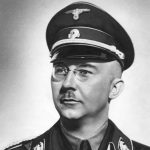 program from his pulpit. Hitler was concerned that other nations would get involved with such publicity about his program. He ordered the program suspended on August 18, 1941…at least in Germany. But 50,000 people had already fallen victim to it.
program from his pulpit. Hitler was concerned that other nations would get involved with such publicity about his program. He ordered the program suspended on August 18, 1941…at least in Germany. But 50,000 people had already fallen victim to it.
Hitler was not to be deterred. He now knew that he had to keep his programs hidden, if he was going to be able to carry out his plans. So, he revived the program in occupied Poland. The people there already had no say in the matter, and he hoped that it would be far enough from Germany so that the German people would not know what was going on. It worked for a time, but in the end, the world would know about the evil he tried so hard to keep hidden, and in the end the number of murder victims was far more than a mere 50,000…it was more like 11 million people.
